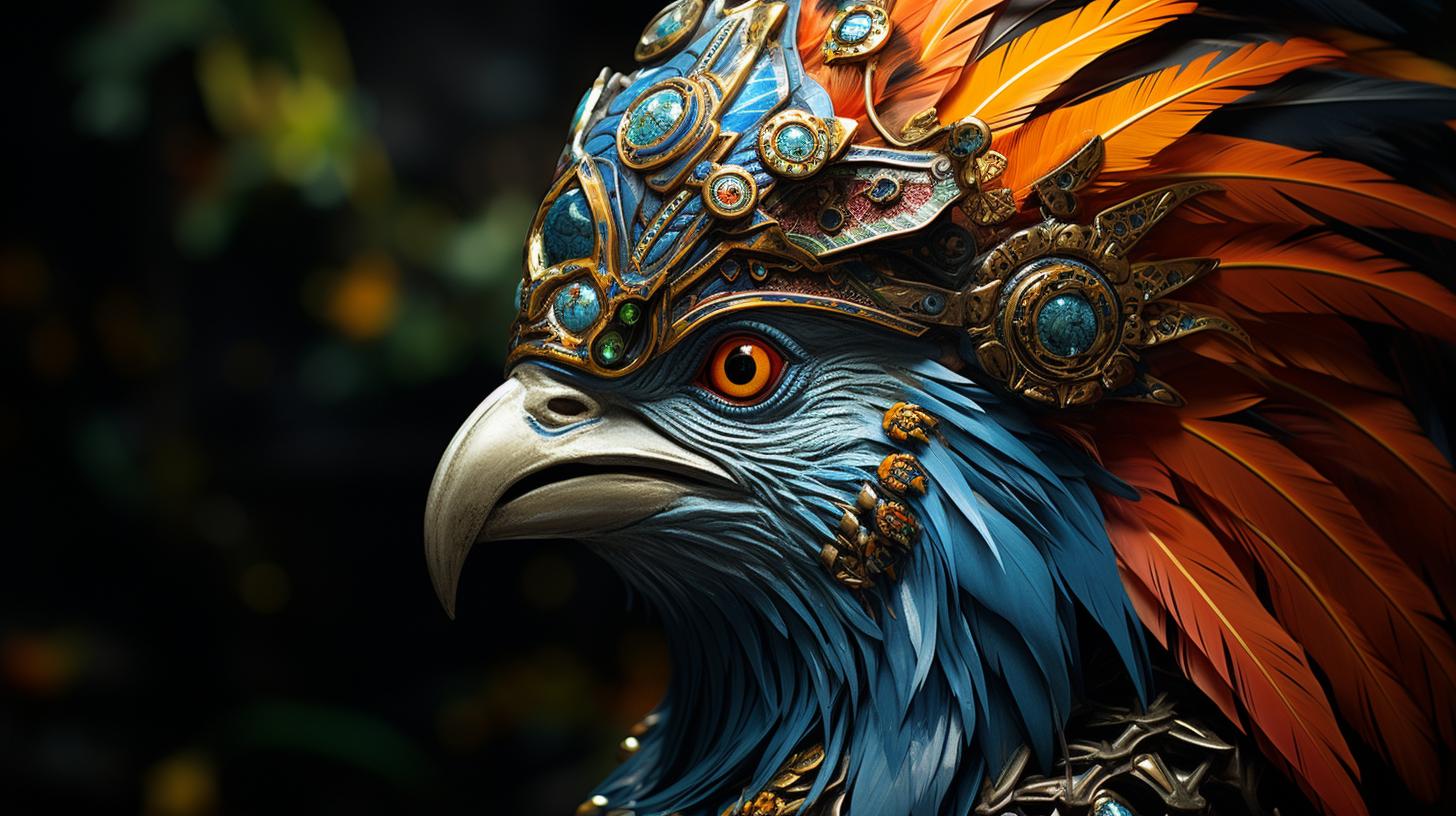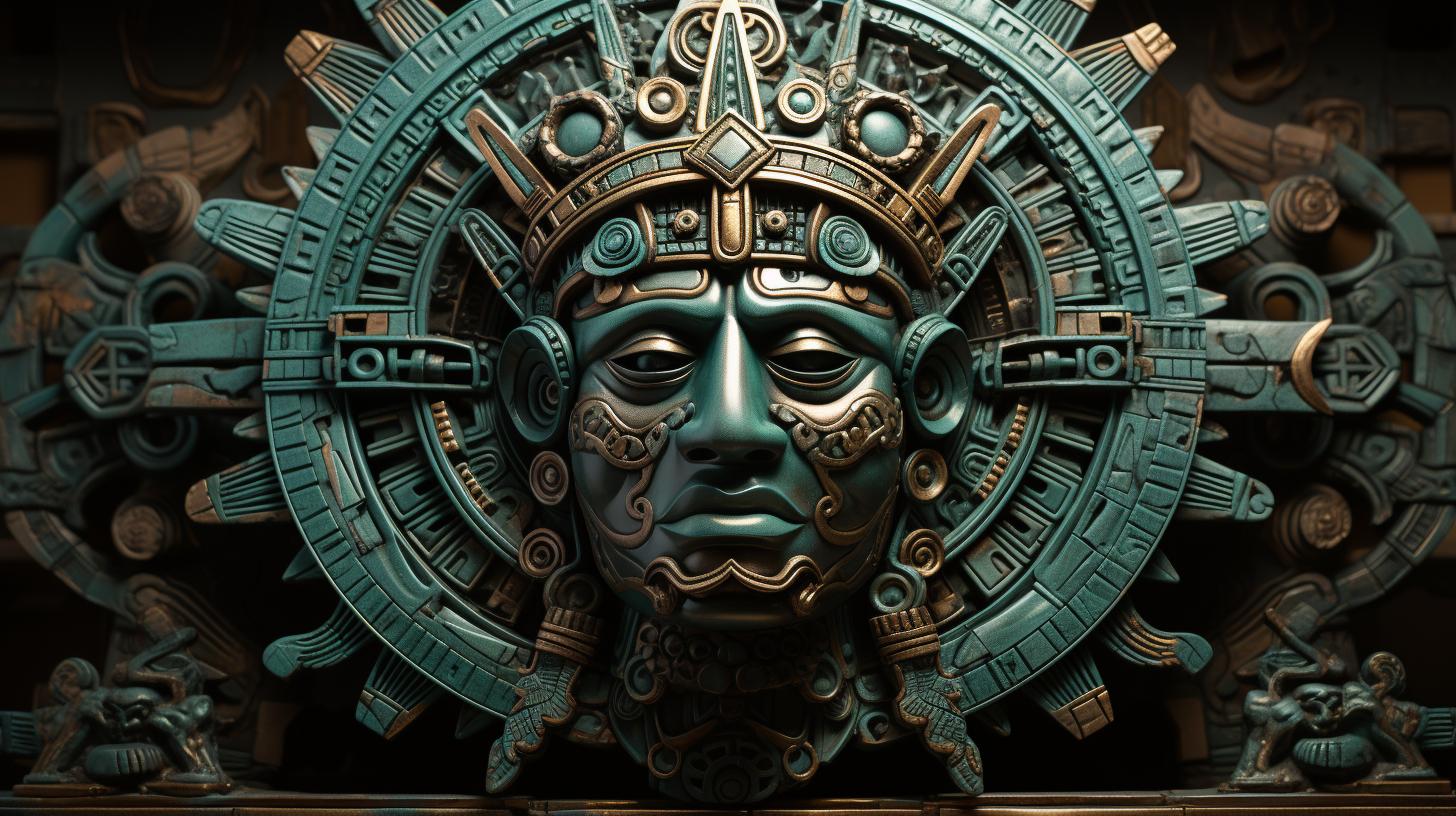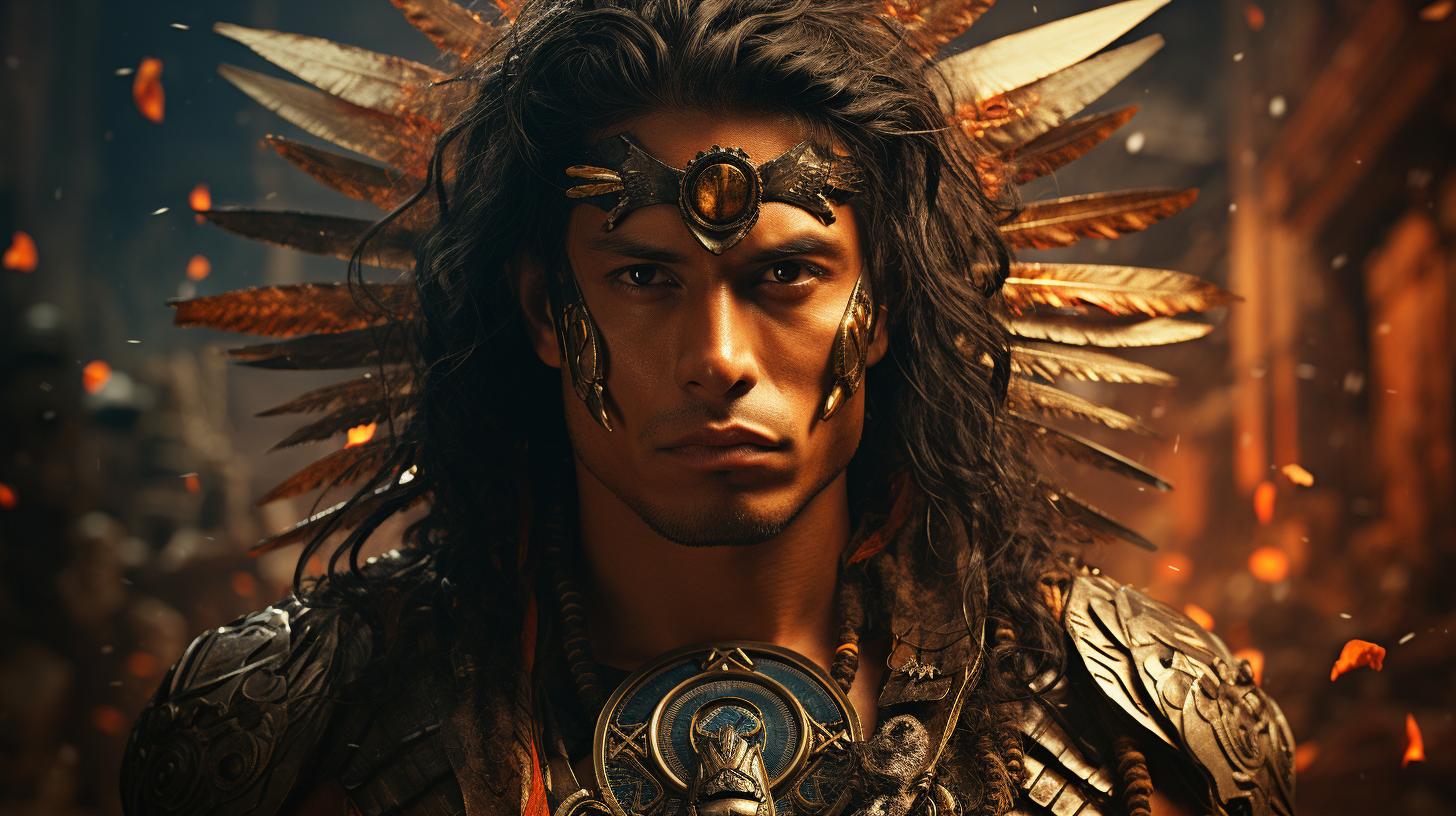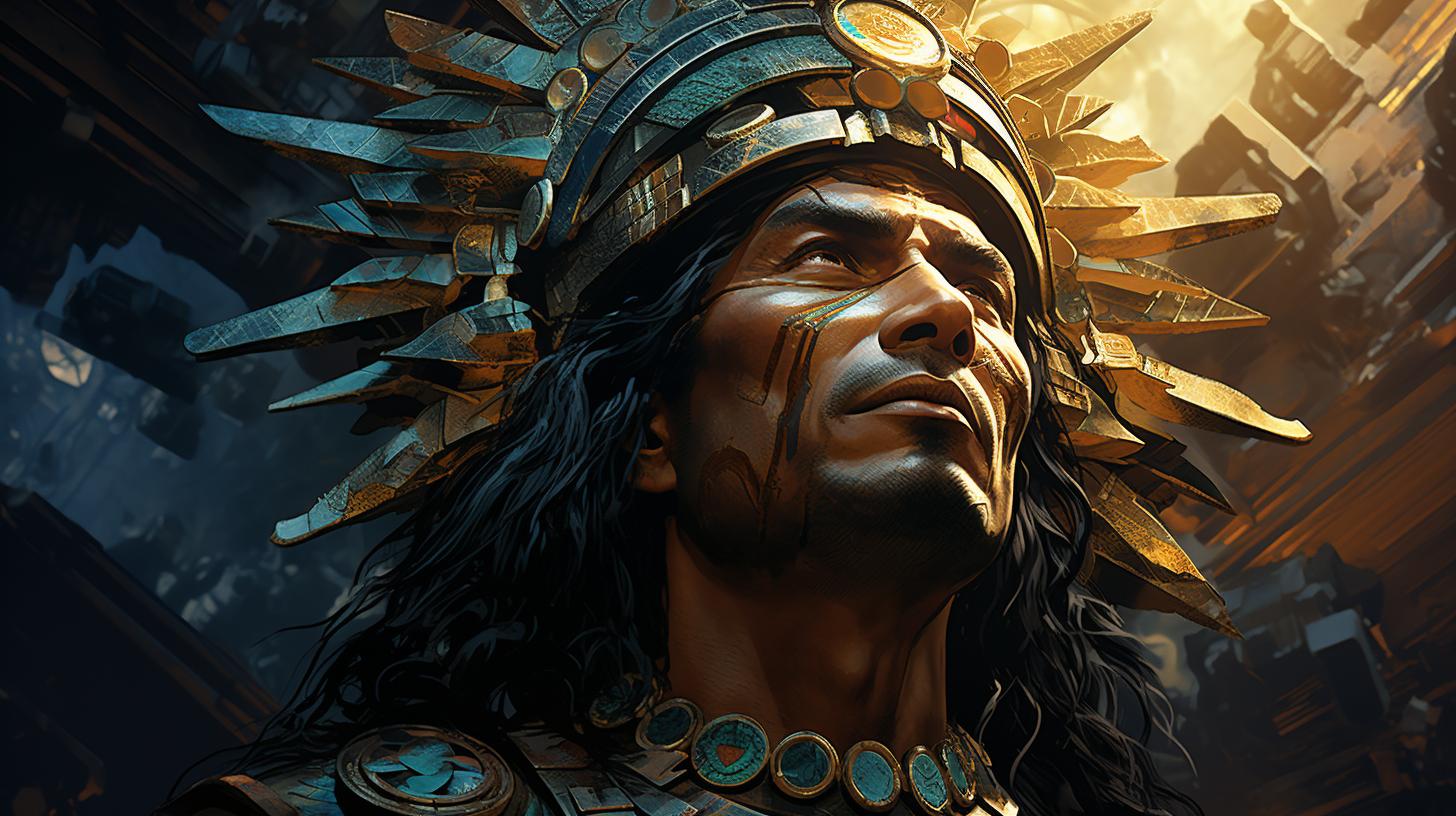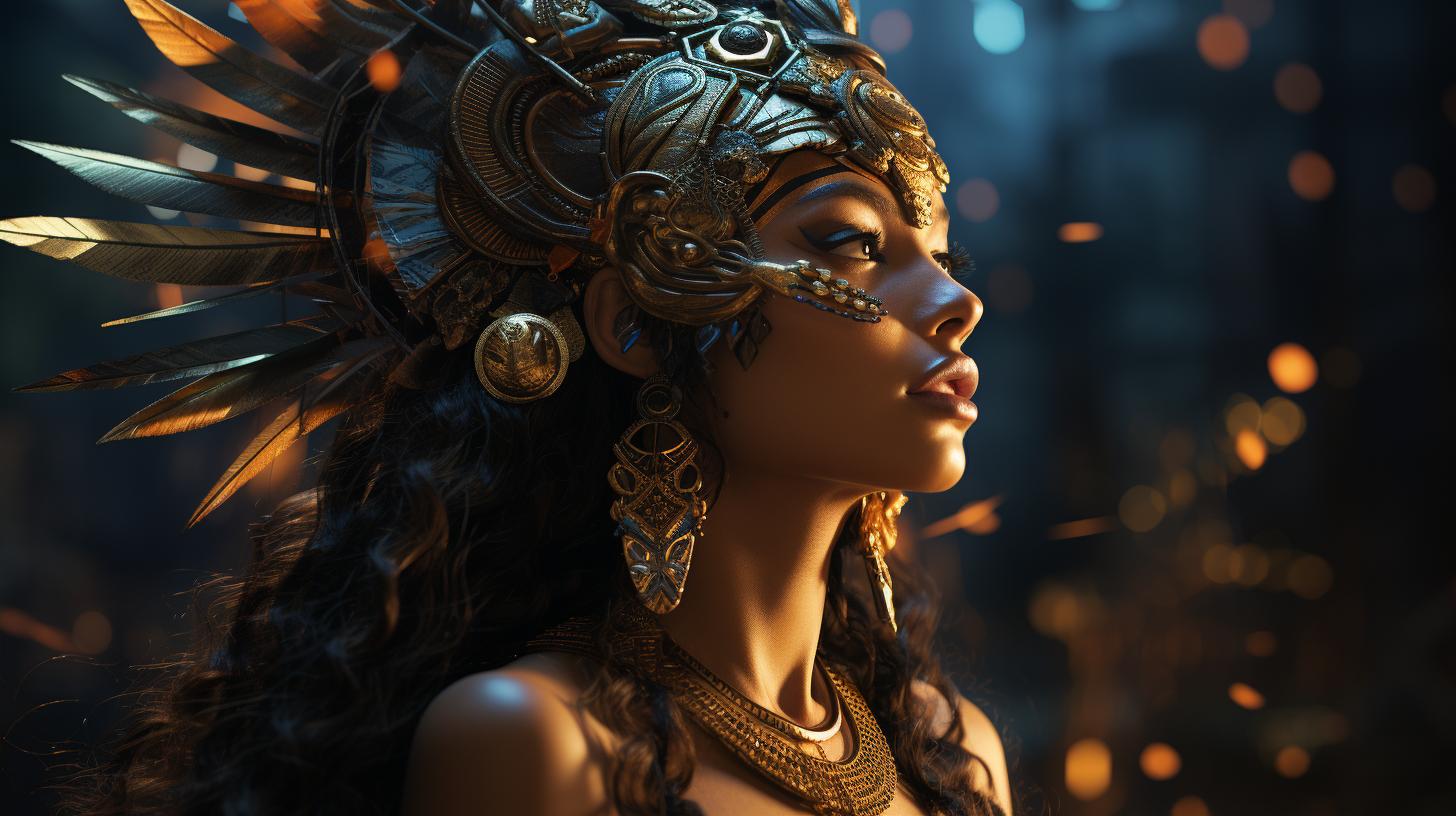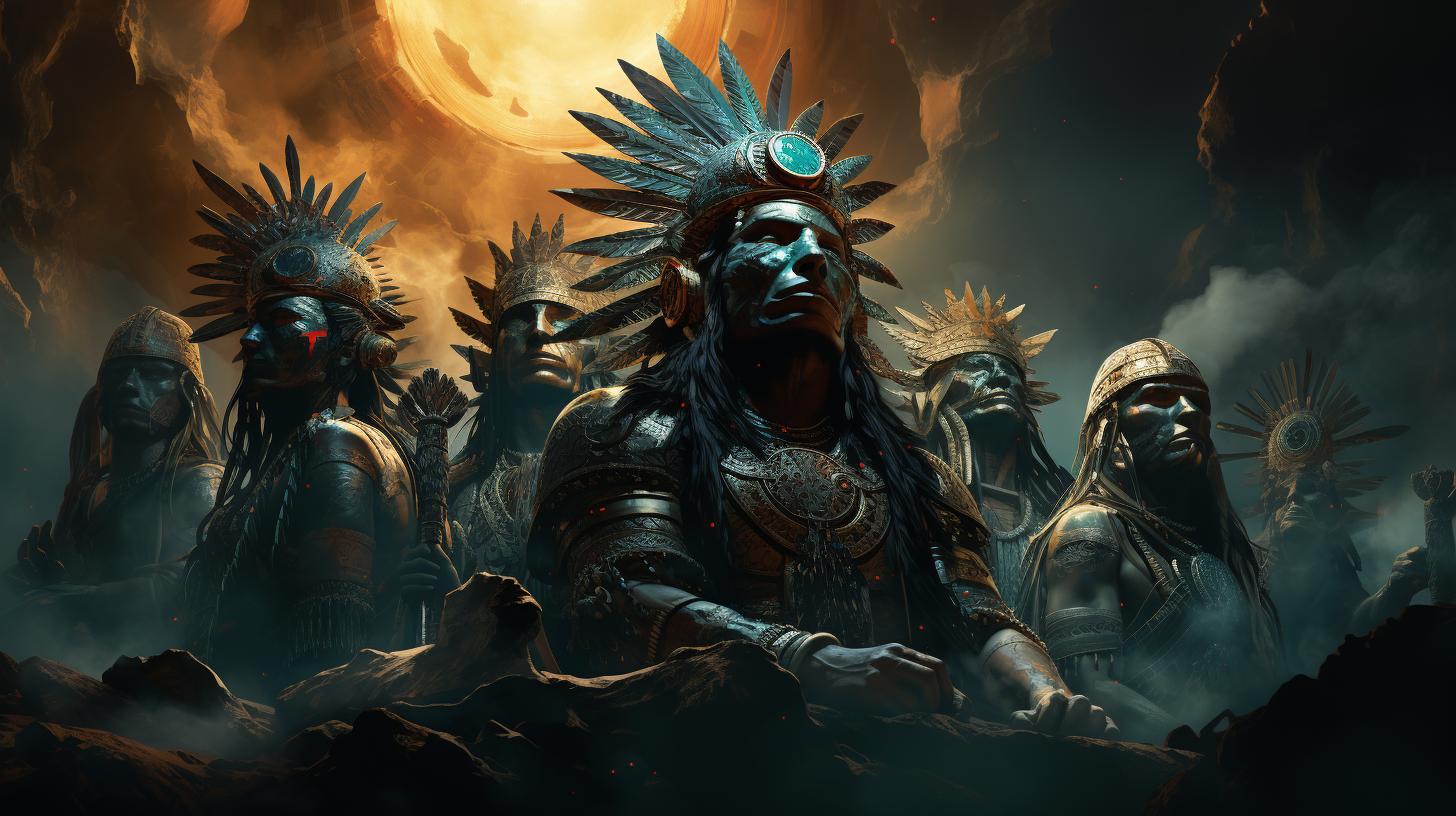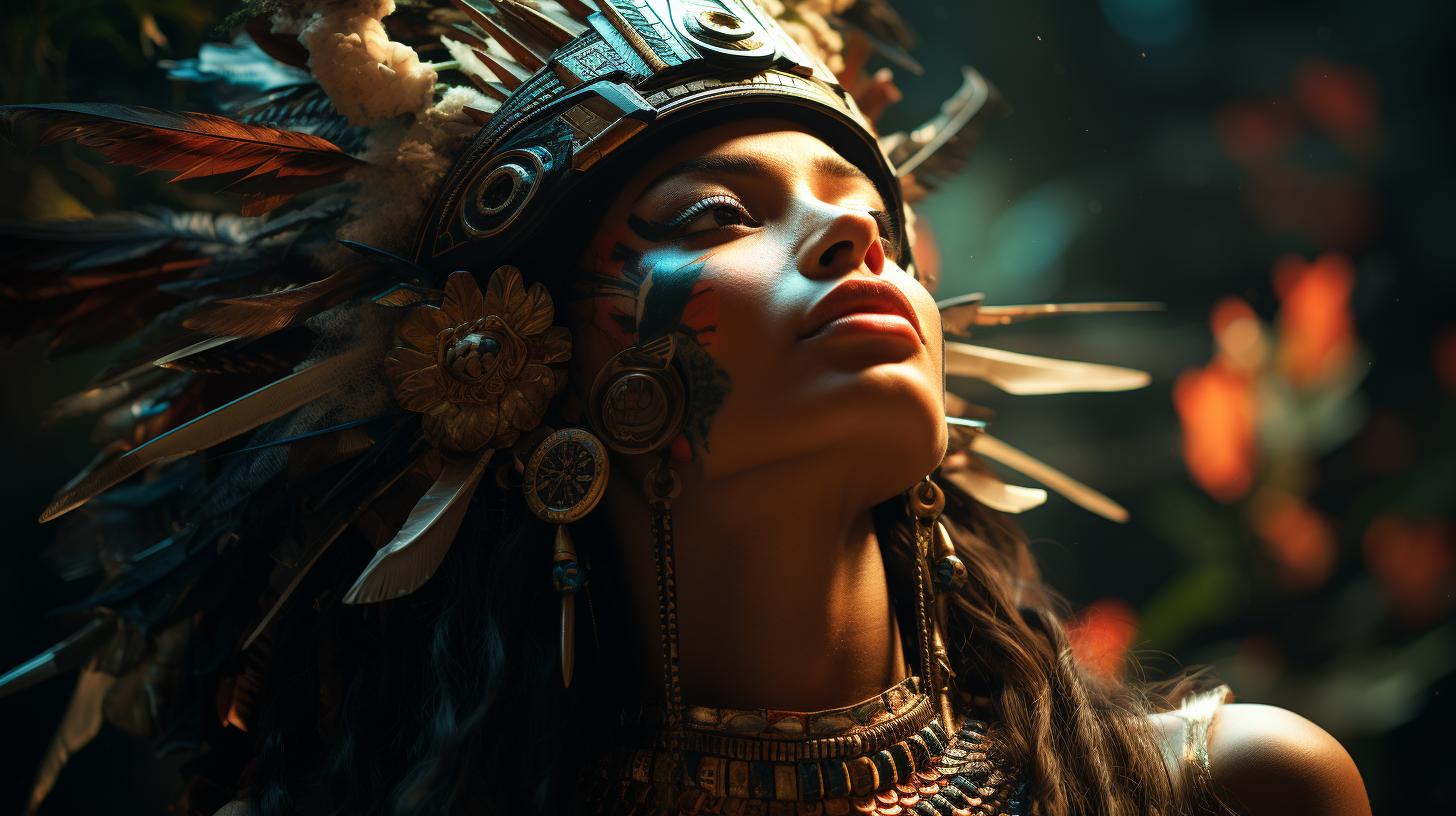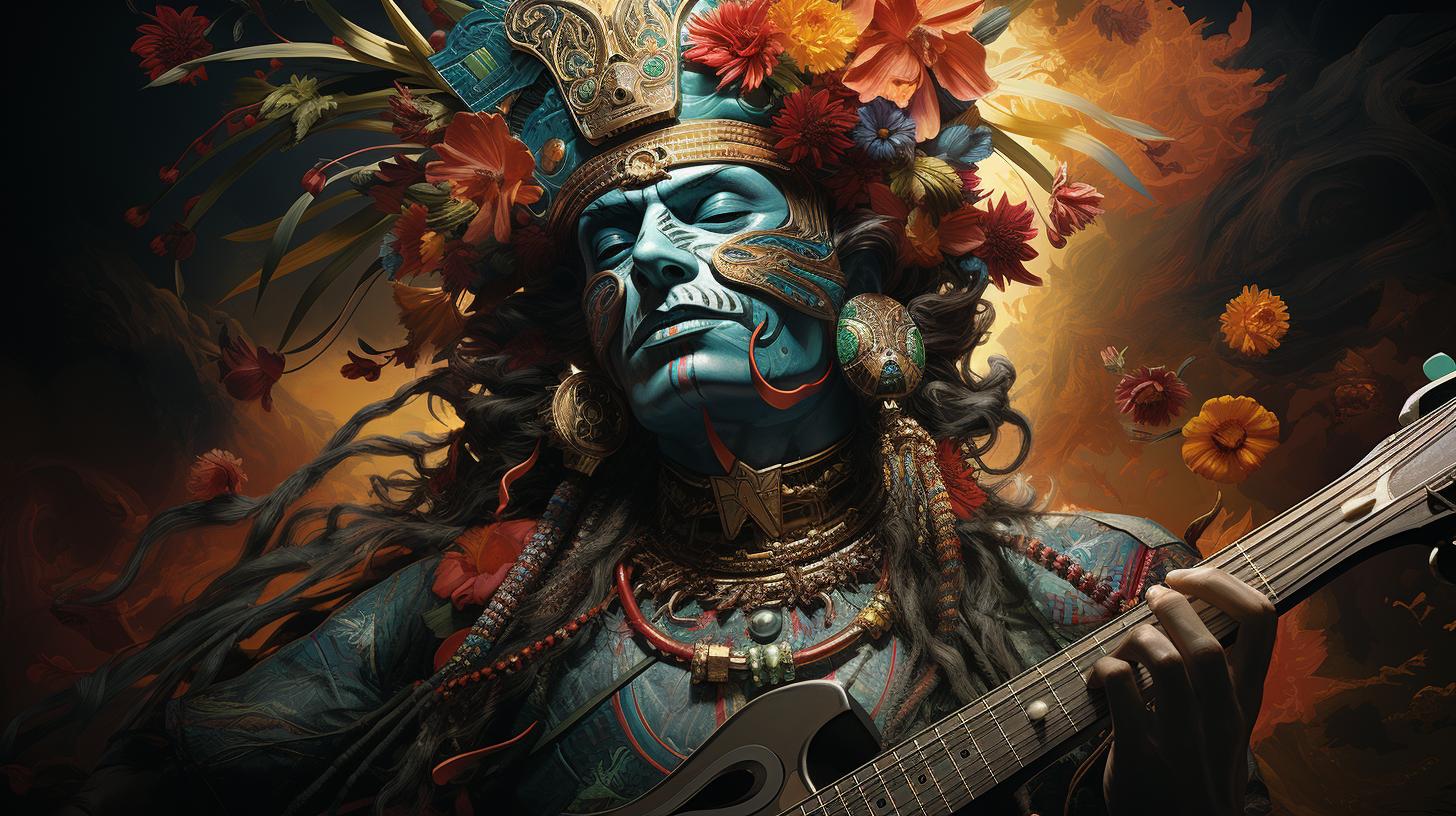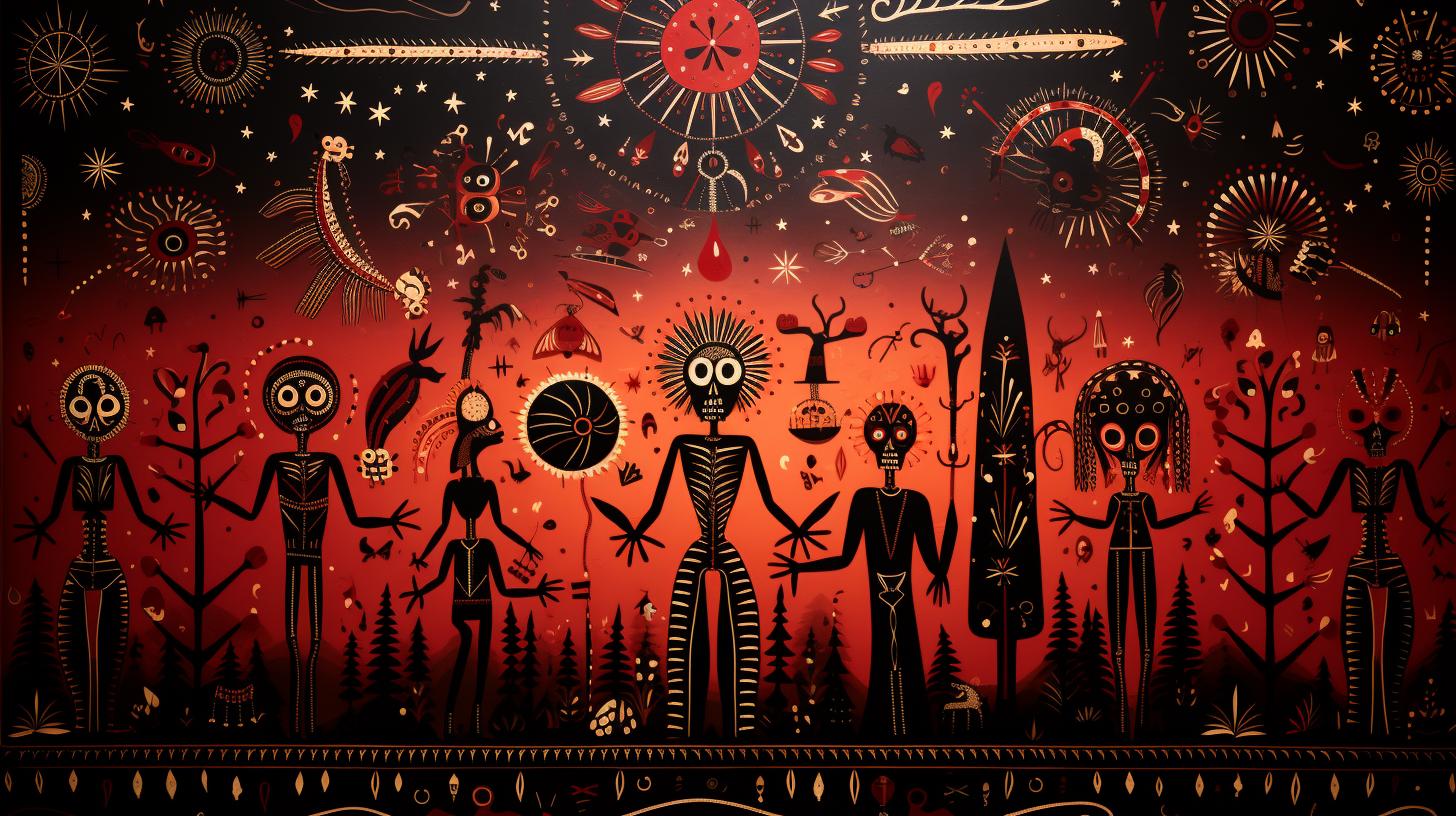Chalchiuhtotolin: The Aztec God of Disease and Pestilence
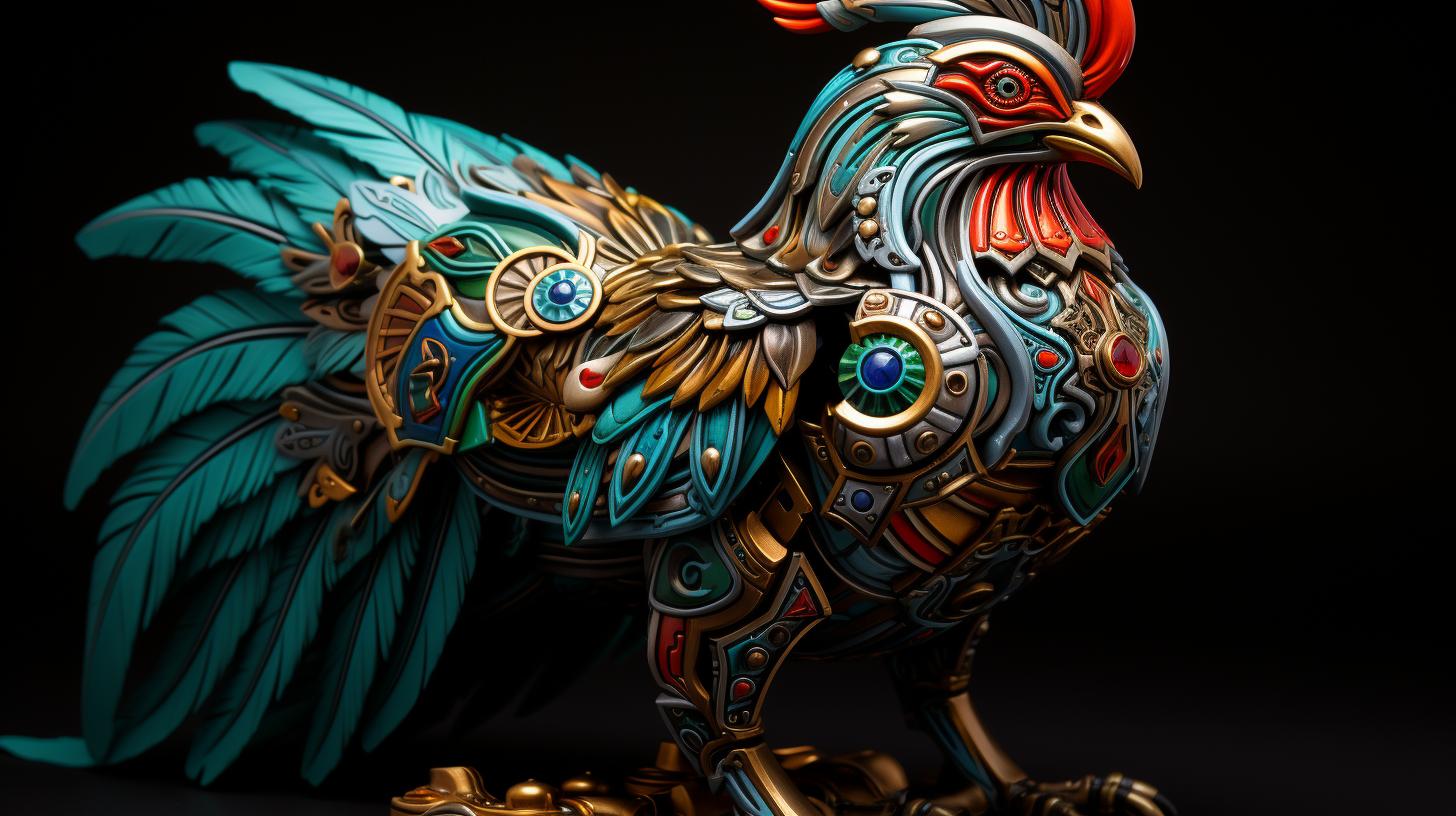
Chalchiuhtotolin is the Aztec god associated with disease and pestilence. This deity, often depicted as a turkey with beautiful jade markings and obsidian arrows, holds significant cultural and symbolic importance in Aztec mythology.
There are speculations regarding potential connections between Chalchiuhtotolin and Tezcatlipoca, another prominent god in Aztec belief. Turkeys, considered sacred by the native inhabitants of America, played a vital role in Aztec rituals and ceremonies.
Surprisingly, despite their association with illness, the Aztecs had a high demand for turkeys as a food source. Mesoamerican depictions of Chalchiuhtotolin reveal striking similarities with the Ocellated Turkey species. Further research is necessary to explore the implications and interpretations of these artistic representations.
Chalchiuhtotolin is a prominent deity in Aztec mythology, associated with disease and pestilence. This powerful god holds significant symbolism and carries an air of mystery surrounding its mythological origins.
Mythological Origins and Symbolism
The origins of Chalchiuhtotolin’s mythological narrative are shrouded in mystery, leaving scholars with limited information to draw upon.
However, it is widely believed that this deity played an essential role in Aztec beliefs and rituals. The symbolism surrounding Chalchiuhtotolin represents an embodiment of disease and pestilence, representing the Aztecs’ understanding of the natural and spiritual forces that shape their world.
Description and Representations
Chalchiuhtotolin is often depicted as a turkey adorned with beautiful jade markings, emphasizing its divine nature. The turkey serves as a vessel for this deity, manifesting its power and purpose. The captivating presence of Chalchiuhtotolin in artworks and descriptions reflects the Aztec reverence for this god and their profound understanding of the interconnectedness between divine entities and the human experience.
Association with Turkeys and their Sacred Status
Within the Aztec culture, turkeys held an esteemed position as sacred animals. Despite their association with disease, the Aztecs recognized the vital role that turkeys played in their rituals and ceremonies.
These birds were honored and revered by being buried alongside humans during ceremonial proceedings, symbolizing their significant spiritual significance to the Aztec people. Furthermore, turkeys held a substantial place in Aztec cuisine, being highly sought after and consumed as a source of sustenance and nourishment.
- Turkeys held sacred status in Aztec culture and were associated with Chalchiuhtotolin.
- Aztecs incorporated turkeys into their rituals and ceremonies, recognizing their spiritual significance.
- Turkeys were highly valued for their role in Aztec cuisine, serving as a source of sustenance.
The association of Chalchiuhtotolin with turkeys and their sacred status showcases the intricate relationship between the divine and the natural world within Aztec belief systems, shedding light on the cultural significance attributed to both the deity and the animal.
Connections between Chalchiuhtotolin and Tezcatlipoca
Chalchiuhtotolin, the Aztec god of disease and pestilence, is believed to have potential connections with Tezcatlipoca, another central deity in Aztec mythology. Tezcatlipoca held a prominent position as one of the four cardinal gods and governed the direction of the north.
While information regarding Chalchiuhtotolin is limited, scholars speculate about possible shared traits and influences between these two gods. They both played significant roles in Aztec belief systems, although their specific domains differed.
Tezcatlipoca: The Central Aztec God
Tezcatlipoca, a central figure in Aztec mythology, was revered as an all-encompassing deity associated with various aspects of life. Often depicted with a smoking mirror on his chest, Tezcatlipoca symbolized divine power, fate, and change.
As one of the major gods in the Aztec pantheon, he held sway over warfare, rulership, and sorcery. His influence extended beyond the physical realm and touched upon the spiritual and cosmic realms as well.
Speculations on Shared Traits and Influences
Though concrete evidence is scarce, scholars speculate about potential shared traits and influences between Chalchiuhtotolin and Tezcatlipoca. While their respective domains differ, both deities played significant roles in Aztec belief systems.
The similarities and connections might suggest overlapping attributes or potential interactions within the mythological framework. Further research is necessary to enhance understanding and establish concrete evidence supporting any potential connections between these two gods.
Comparisons and Differences between the Gods
When considering Chalchiuhtotolin and Tezcatlipoca, it is essential to explore both their commonalities and distinctions. While both deities were significant within the Aztec pantheon, their specific roles and attributes differed.
Chalchiuhtotolin represented disease and pestilence, striking fear into the hearts of humans as a feathered serpent adorned with jade markings and carrying obsidian arrows. In contrast, Tezcatlipoca encompassed a wider range of aspects, governing not only warfare and rulership but also fate, change, and the metaphysical realm.
Understanding the nuances and unique characteristics of these gods contributes to a more comprehensive understanding of Aztec mythology.
Cultural Significance of Turkeys in Aztec Society
The Aztec society attributed a significant cultural and symbolic importance to turkeys. They played a vital role in various aspects of Aztec life, including rituals, ceremonies, cuisine, and exploration.
Role of Turkeys in Rituals and Ceremonies
Turkeys held a sacred status among the Aztecs and were actively involved in their religious rituals and ceremonies.
These birds were considered offerings to the gods and were often sacrificed alongside humans in elaborate ceremonies. The presence of turkeys during these rituals symbolized abundance, fertility, and a connection with the divine.
Aztec Cuisine and Demand for Turkeys
The Aztecs had a high demand for turkeys as a source of food. Turkeys were domesticated and bred specifically for consumption. They were a staple in the Aztec diet, especially during feasts and special occasions.
The meat of turkeys was highly valued for its taste and nutritional value, contributing to the cultural significance of these birds in Aztec cuisine.
Exploration and Introduction to Europe
During the Spanish conquest of the Aztec empire, the explorers encountered domesticated turkeys. Recognizing their potential as a food source, the Spanish brought turkeys back to Europe as farm animals. This introduction of turkeys to Europe not only influenced European cuisine but also contributed to the widespread popularity and consumption of turkeys in various parts of the world.
- The Aztecs regarded turkeys as sacred creatures and incorporated them into their religious practices.
- Turkeys were essential offerings in religious rituals, symbolizing wealth and connection with the divine.
- They were highly regarded for their meat, which became a primary food source in Aztec cuisine.
- During the Spanish conquest, turkeys were brought back to Europe, leading to their global popularity.
The cultural significance of turkeys in Aztec society showcases their multifaceted role as symbols of religious devotion, nourishment, and exploration.
Understanding the reverence and utilization of turkeys in Aztec culture provides insights into the intricate relationship between humans, animals, and spirituality in Mesoamerican civilizations.
Mesoamerican Depictions of Chalchiuhtotolin
The Mesoamerican depictions of Chalchiuhtotolin, the Aztec god of disease and pestilence, offer fascinating insights into the artistic representation and interpretations of this deity. Various Mesoamerican cultures produced artwork showcasing Chalchiuhtotolin, highlighting its unique characteristics and associations.
Similarities with the Ocellated Turkey
One of the intriguing aspects of the Mesoamerican depictions of Chalchiuhtotolin is the presence of similarities with the ocellated turkey. Native to the Yucatán Peninsula, the ocellated turkey boasts remarkable feather patterns and colors, resembling some representations of the Aztec god.
This similarity suggests a potential inspiration or connection between Chalchiuhtotolin and the ocellated turkey.
Artistic Representations and Interpretations
Mesoamerican artwork depicting Chalchiuhtotolin often showcases the god as a turkey adorned with intricate jade markings and carrying obsidian arrows. These artistic representations emphasize the association of disease and pestilence with this deity.
Additionally, these depictions may denote the intimidating and fearsome nature of Chalchiuhtotolin as a bringer of illness.
Implications
The artistic depictions of Chalchiuhtotolin hold significant implications for understanding the cultural and symbolic importance assigned to this Aztec god. The presence of distinctive feather patterns, the use of jade, and the incorporation of obsidian arrows all contribute to the multifaceted interpretations and meanings associated with Chalchiuhtotolin.
Further Research
The study of Mesoamerican depictions of Chalchiuhtotolin remains an ongoing area of research, offering opportunities for deeper exploration and understanding. Further investigation into the meaning behind specific artistic elements, the evolution of representations across different regions and time periods, and the possible connections with other Mesoamerican deities can shed more light on the significance of Chalchiuhtotolin in Aztec culture.
- Uncover the symbolism behind the jade markings in representations of Chalchiuhtotolin
- Explore the potential influence of other Mesoamerican cultures on the depictions of the god
- Analyze the shift and variations in artistic styles and interpretations of Chalchiuhtotolin across different time periods
- Investigate the role of Chalchiuhtotolin in Aztec rituals and ceremonies through the examination of artistic representations
In conclusion, the Mesoamerican depictions of Chalchiuhtotolin present a captivating glimpse into the artistic interpretations and cultural significance of this Aztec god.
The similarities with the ocellated turkey, the symbolism embedded in the artwork, and the avenues for further research all contribute to a richer understanding of Chalchiuhtotolin’s place within Mesoamerican mythology and society.
.

